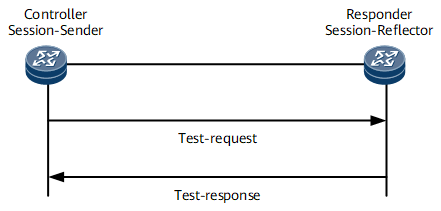Overview of TWAMP Light
TWAMP Light, as a light version of the Two-Way Active Measurement Protocol (TWAMP), simplifies the control protocol used to establish test sessions and measures the round-trip performance of an IP network.
Background
TWAMP is an IP performance monitoring (IPPM) protocol and has two versions: standard version and light version. Different from standard TWAMP, TWAMP Light moves the control plane from the Responder to the Controller so that TWAMP control modules can be simply deployed on the Controller. Therefore, TWAMP Light greatly relaxes its requirements on the Responder performance, allowing the Responder to be rapidly deployed.
Characteristic
TWAMP Light deploys the Control-Client and Session-Sender on the Controller and the Session-Reflector on the Responder.
The Controller creates test sessions, collects performance statistics, and periodically reports the statistics to the NMS through the performance management (PM) module. Then, the Controller parses NMS information and sends the results to the Responder through private channels. The Responder reflects TWAMP-Test packets received over test sessions.
Models
In Figure 1, TWAMP-Test packets function as probes and carry the IP address and UDP port number, and fixed TTL value 255 that are predefined for the test session between the Controller and Responder. The Controller sends a TWAMP-Test packet to the Responder, and the Responder replies to it. The Controller collects TWAMP statistics.
- Test-request packets are sent from the Controller to the Responder.
- Test-response packets are replied by the Responder to the Controller.
The Controller collects performance statistics based on TWAMP-Test packets and reports the results to the NMS, which provides the statistics to users.
